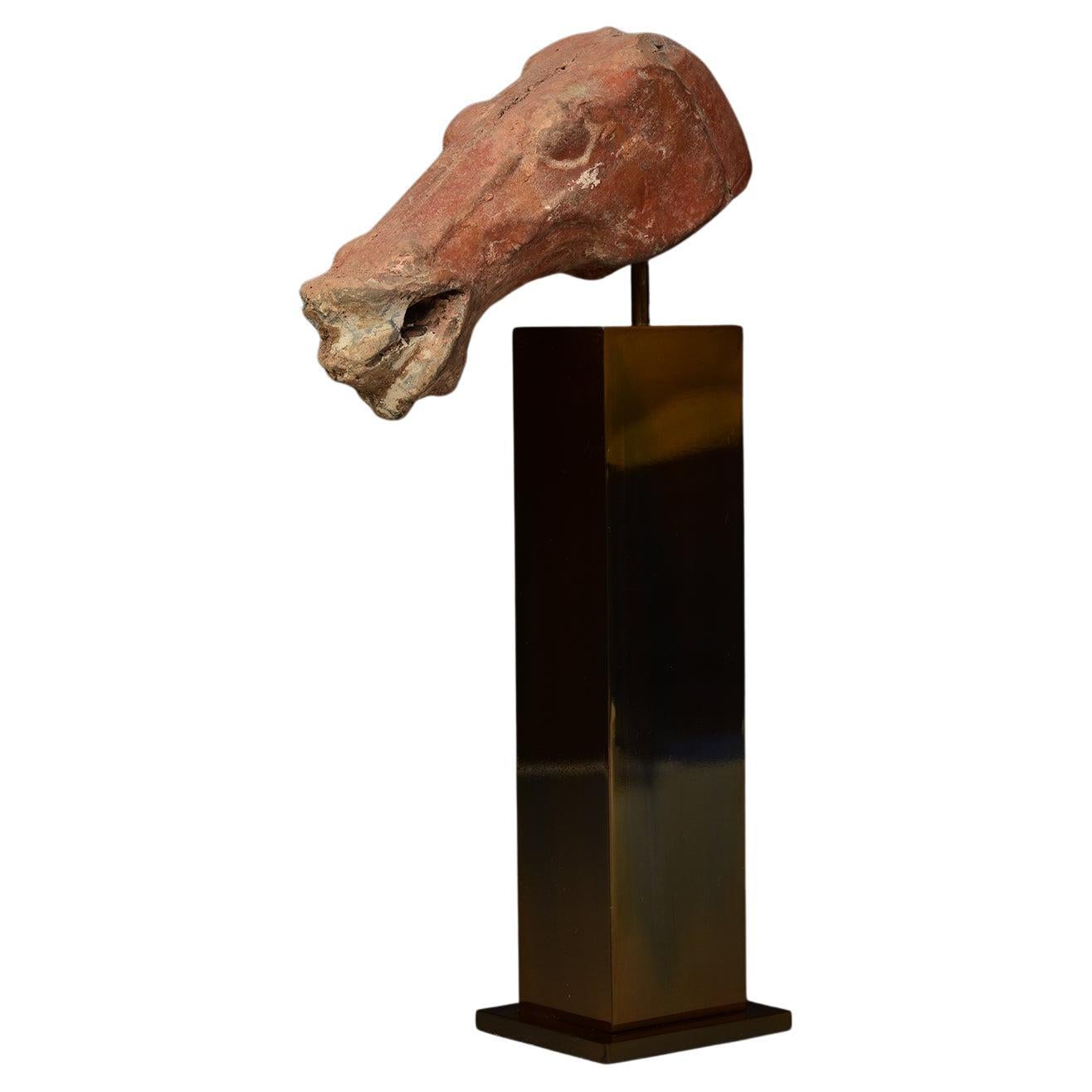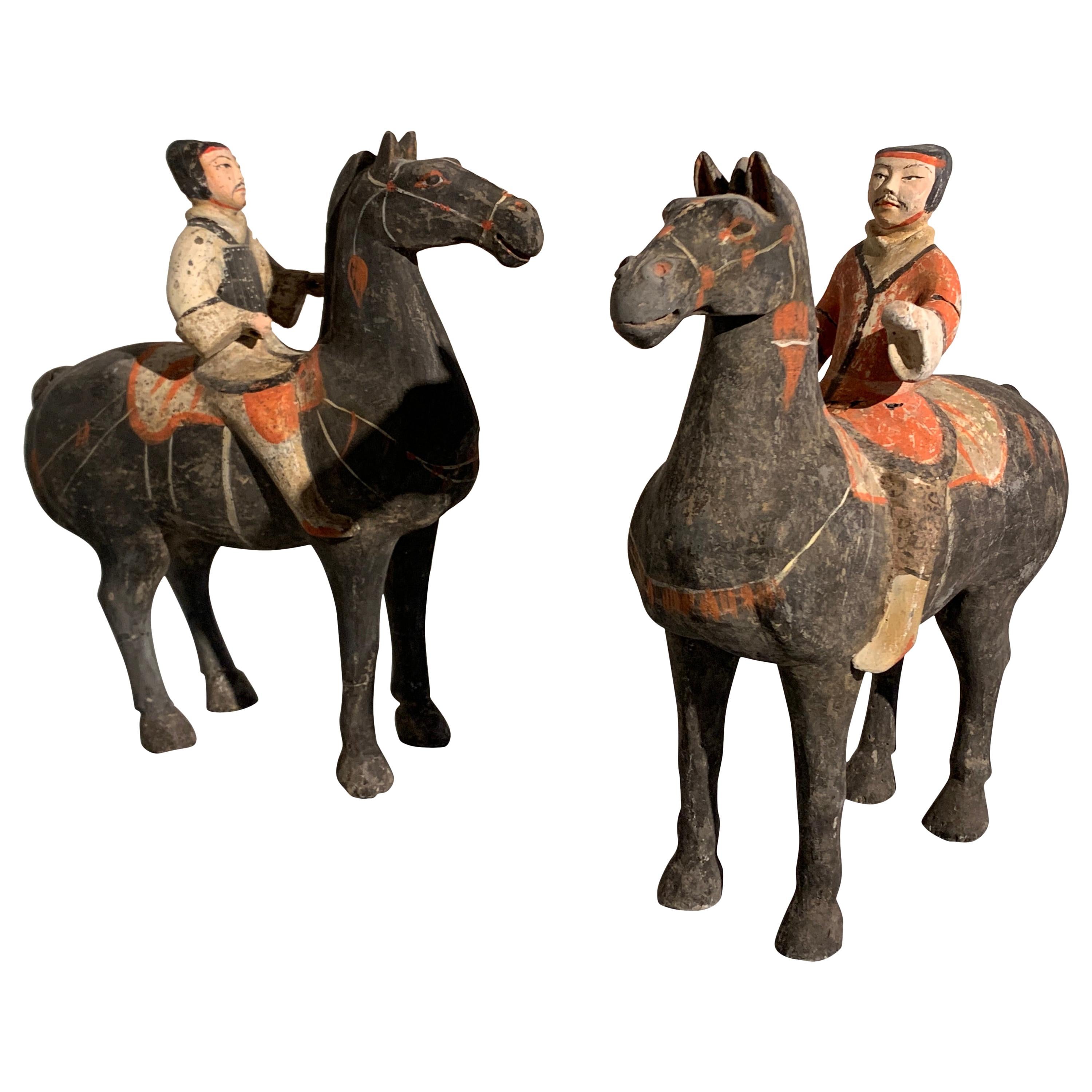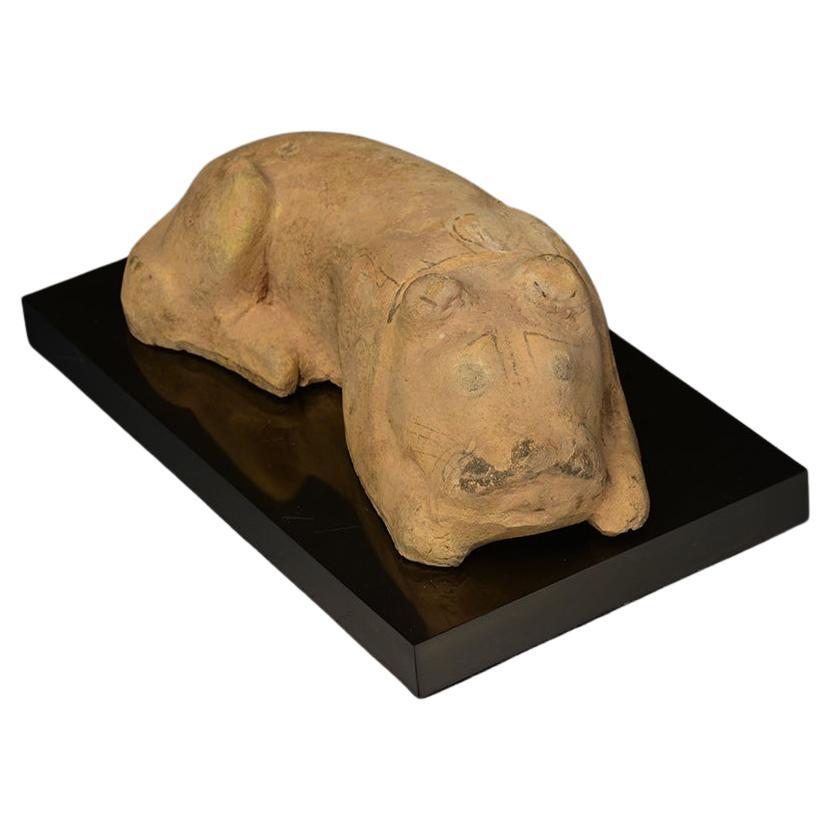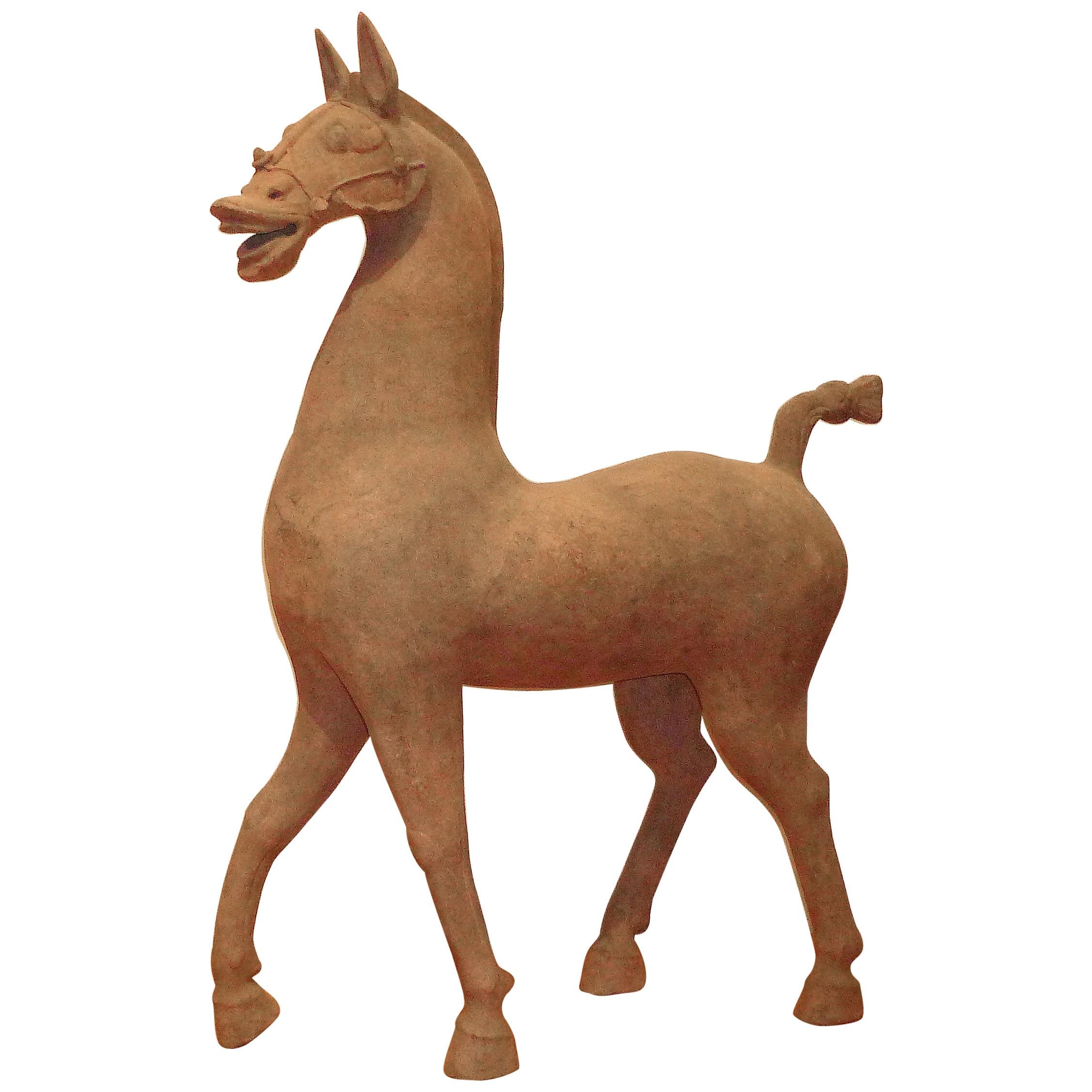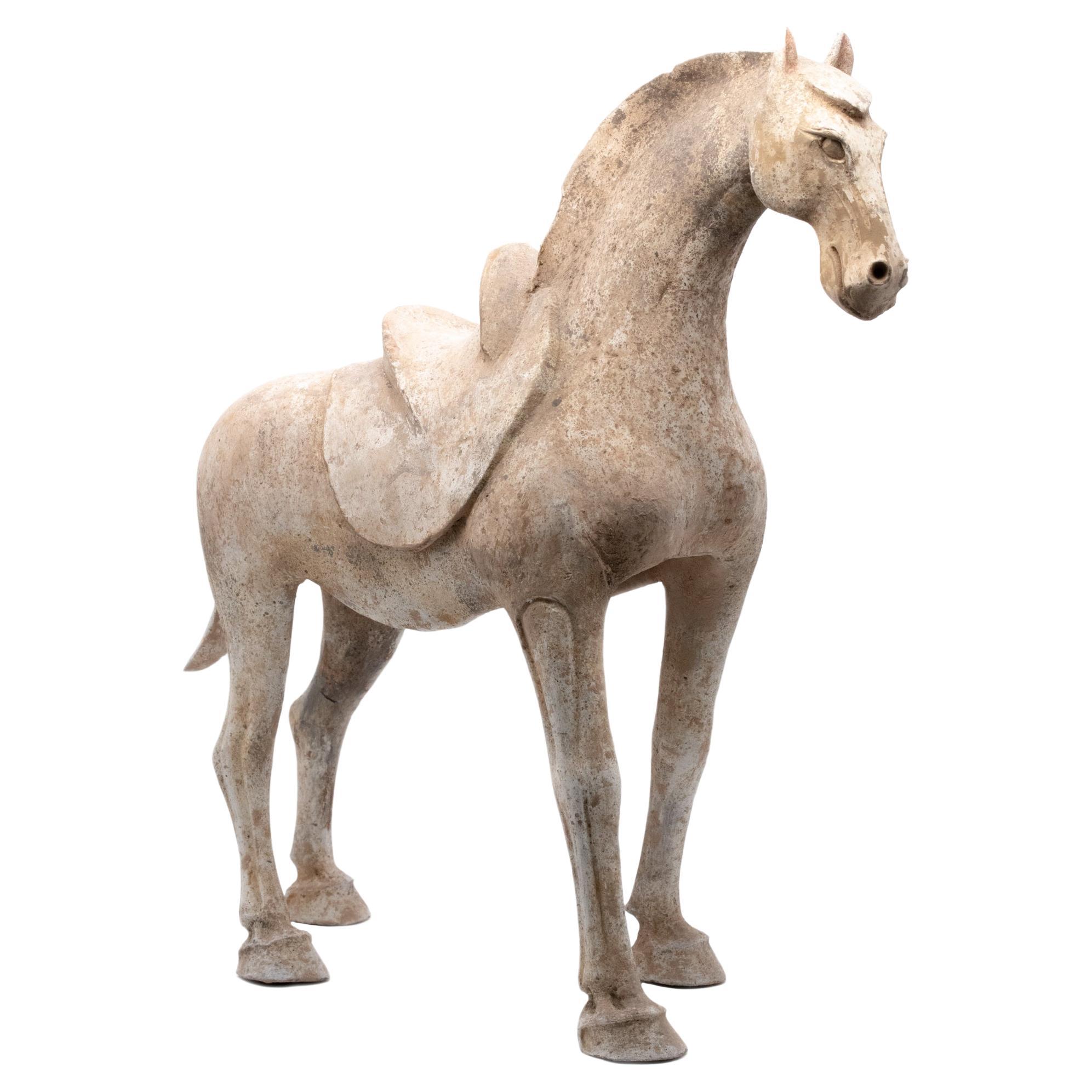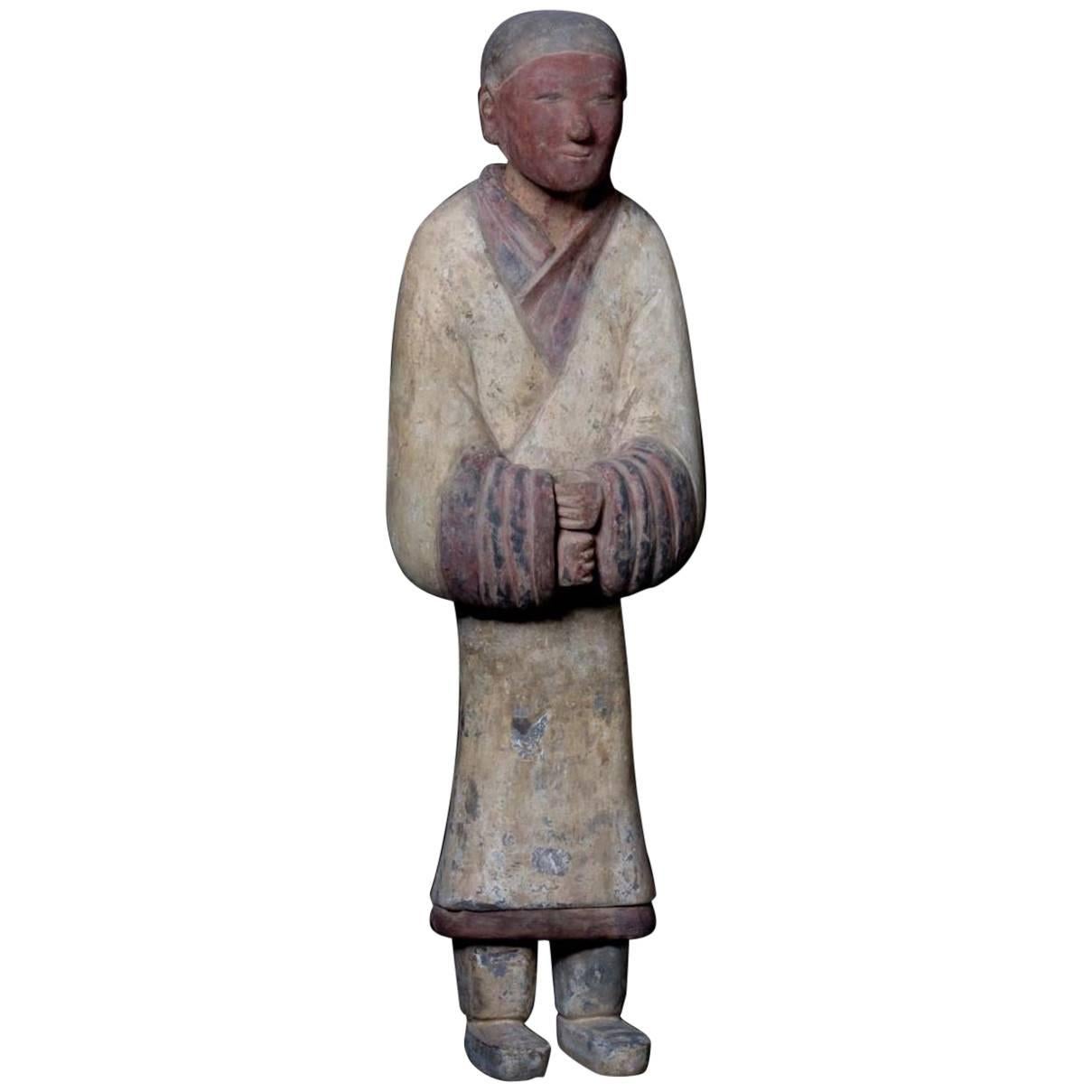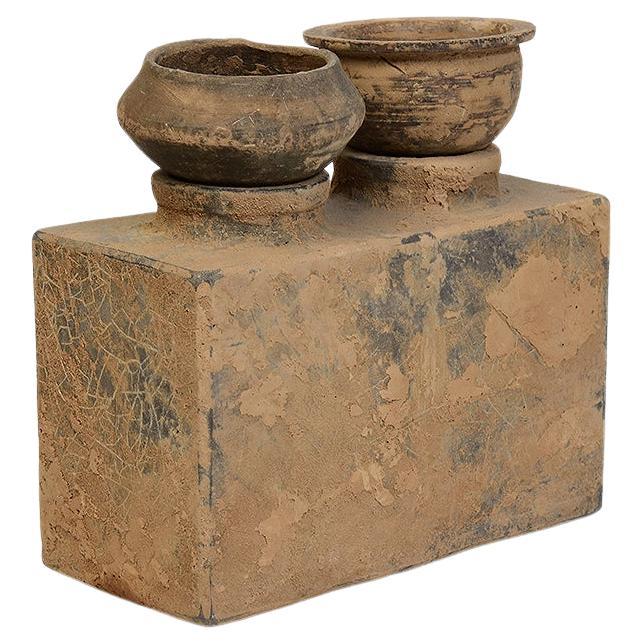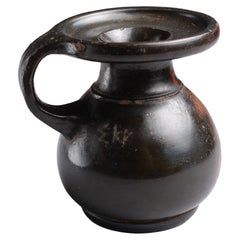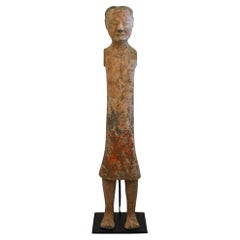
Ancient Chinese Han Dynasty Pottery Horse Head Sculpture, 202 BC
View Similar Items
Want more images or videos?
Request additional images or videos from the seller
1 of 5
Ancient Chinese Han Dynasty Pottery Horse Head Sculpture, 202 BC
About the Item
- Dimensions:Height: 9.5 in (24.13 cm)Diameter: 6 in (15.24 cm)
- Place of Origin:
- Period:
- Date of Manufacture:202 BC
- Condition:Very good, wear to surface synonymous with an ancient artefact, reattached at the muzzle, otherwise unrestored and with good pigment preservation.
- Seller Location:London, GB
- Reference Number:1stDibs: LU105226060693
About the Seller
5.0
Recognized Seller
These prestigious sellers are industry leaders and represent the highest echelon for item quality and design.
Established in 2008
1stDibs seller since 2014
100 sales on 1stDibs
Typical response time: 8 hours
Associations
LAPADA - The Association of Arts & Antiques DealersInternational Confederation of Art and Antique Dealers' AssociationsThe British Antique Dealers' Association
More From This SellerView All
- Ancient Greek Corinthian HelmetLocated in London, GBCorinthian helmet with Bull Horns and Lotus Flower Decoration. Archaic Period, c.550-500 BC. Cast, hammered and incised bronze. An exceptionally well preserved example of one of the most iconic ancient Greek...Category
Antique 15th Century and Earlier European Classical Greek Mounted Objects
MaterialsBronze
- Ancient Greek Perfume BottleLocated in London, GBAthenian Black-glaze perfume pot with inscription Athens, c. 425-400 B.C. Terracotta Measures: Height: 9cm; diameter across lip: 7.5cm; width including handle: 9cm This 5th Cen...Category
Antique 15th Century and Earlier Italian Classical Greek Bottles
MaterialsPottery
- Ancient South Arabian Alabaster InscriptionLocated in London, GBSouth Arabian Alabaster Inscription Calcite Alabaster circa 1st century A.D. ‘’Consequently, neither white marble of Paros nor any other stone which men admire can be compared with the precious stones of Arabia, since their whiteness is most brilliant, their weight the heaviest, and their smoothness leaves no room for other stones to surpass them.’’ - Diodorus Siculus, Library of History, Book II, 52.9 This inscription, finely worked on an alabaster tablet, is a remarkably well preserved example of Ancient South Arabian script, with its distinct bold, angular forms, written in the Qatabanic dialect - that is, the dialect spoken by the people of the kingdom of Qataban, which ruled much of modern day Yemen from the 7th Century B.C. to the 2nd Century A.D. The text, which reads: ‘[... ...]sa?d and Ma?add?i- / (of the lineage) of Hawfa- / She entrusted Anb- / against any malfeasance (which would remove it) from its place’ - indicates that it likely served to commemorate a temple offering. The quality of the script, incised so neatly into the surface of the alabaster, tells us that this piece was commissioned by somebody of considerable wealth and prestige, employing a scribe of equally considerable expertise. South Arabia was known throughout the ancient world for its incredible wealth - so much so that the Romans termed the region ‘Arabia Felix’ - literally, ‘Happy, or Fortunate, Arabia.’ That wealth was built largely on the trade of spices and incense, in which the Kingdom of Qataban played a major part. According to Pliny the Elder, this was the sole country through which frankincense could be exported, first being collected in the city of Shabwa, on the South Arabian coast, and from there travelling by camel up to Gaza, to be shipped all across the Mediterranean - not only that, but all growers of myrrh across Arabia were required to give a quarter of their yield to the king of the Qatabanians. As such, the kingdom became exceedingly rich and powerful, and Pliny goes on to tell us that ‘The nations of the Larendani and the Catabani, and the Gebanitæ [...] occupy a great number of towns, the largest of which are Nagia, and Thomna (the capital of Qataban) with sixty-five temples, a number which fully bespeaks its size.’ Because of the nature of its exports, frankincense in particular - the ‘sweat of of the gods’ according to the Egyptian Book of the Dead, and perhaps most famous as one of the three gifts brought to the newborn Christ - being closely associated with the divine, South Arabia’s reputation in antiquity was as a mysterious, almost sacred, and - crucially - extraordinarily wealthy region, at the very edge of the known world; in the words of Herodotus: ‘’Enough of marvels, and yet the land of Arabia gives off a scent as sweet as if divine.’’ This inscription invokes the protection of god Anbay, the judge-oracle of the chief god ‘Amm, who he served as an attendant. Much of what we know of the religious life of the ancient South Arabians comes to us from early Islamic texts, describing what is known in Islamic scholarship as ‘Jahiliyyah’ - the age before the advent of Islam in Arabia. What comes across in much of these texts is that these religious practices placed a great deal of emphasis on sacred stones, perhaps linked to the brilliance of the alabaster which is local to the region, and which a great many of the cult-objects produced in this time are made from. Hisham ibn-Al-Kalbi’s Book of Idols records: ‘’The Arabs were passionately fond of worshipping idols [...] Whenever a traveller stopped at a place or station in order to rest or spend the night, he would select for himself four stones, pick out the finest among them and adopt it as his god, and use the remaining three as supports for his cooking-pot.’’ This inscription was once in the collection of the intrepid British-Australian travel...Category
Antique 15th Century and Earlier Yemeni Abstract Sculptures
MaterialsAlabaster
- Ancient Hellenistic Glass Finger RingLocated in London, GBThis beautifully preserved ring was cast from light green transparent glass. Its large size and shape are typical of Hellenistic finger rings, and its now ...Category
Antique 15th Century and Earlier Classical Greek Glass
MaterialsGlass
- Ancient South Arabian Alabaster StatueLocated in London, GBSouth Arabian Calcite female figure 3rd Century BC to 1st century A.D. Calcite Alabaster height: 30.5 cm A magnificent alabaster female figure, a f...Category
Antique 15th Century and Earlier Yemeni Figurative Sculptures
MaterialsAlabaster
- Ancient Egyptian Monumental Temple SphinxesLocated in London, GBA pair of monumental limestone sphinxes of Pharaoh Nectanebo I, from the processional avenue of the Serapeum of Memphis, 30th Dynasty, circa 379 - 360 BC. The sphinxes of the Serapeum have captivated travellers since Roman times. However, despite their significance, they are conspicuously absent from the collections of most major museums. Indeed, their existence in private hands is so improbable, and their imitations so numerous, that the present sphinxes were assumed to be modern copies throughout their recent ownership history. Finally recognised and conserved after an extraordinary chance discovery at a garden furniture sale...Category
Antique 15th Century and Earlier Egyptian Egyptian Figurative Sculptures
MaterialsLimestone
You May Also Like
- Han Dynasty, Antique Chinese Pottery Horse HeadLocated in Sampantawong, THChinese pottery horse head with original red and some white pigments remaining. Age: China, Han Dynasty, 206 B.C.- A.D.220 Size: Height 5.5 C.M. /...Category
Antique 15th Century and Earlier Chinese Antiquities
MaterialsPottery
$760 Sale Price20% Off - China 100 BC Han Dynasty Ancient Rare Stickman Sculpture in Earthenware PotteryLocated in Miami, FLStanding Stickman from the Han Dynasty. Original ancient Chinese tomb attendants sculpture of a tall, thin standing man wearing a short tunic. Beautifully crafted in grey earthenw...Category
Antique 15th Century and Earlier Chinese Han Antiquities
MaterialsIron
- Ancient China Monumental Stone Ram Han Dynasty, 206BC-220ADLocated in South Burlington, VTChina, a large votive model of a stone ram, Han dynasty (206BC-220AD) Dimensions: 45cm, 18 inches high and 65cm, 26 inches length and 25cm, 10 inches wi...Category
Antique 15th Century and Earlier Chinese Han Sculptures and Carvings
MaterialsLimestone
- Monumental Han Dynasty Terracotta Horse - TL Tested - China, '206 BC–220 AD'Located in San Pedro Garza Garcia, Nuevo LeonA massive pottery horse with separately made head and tail, standing on all fours and striding with its right hoof forward. Extended snout ends in parted lips showing teeth beneath i...Category
Antique 15th Century and Earlier Chinese Han Antiquities
MaterialsTerracotta
- Pair of Chinese Painted Pottery Han Dynasty Horse and RidersLocated in Austin, TXA pair of Han Dynasty (206 BC-220 AD) painted pottery horse and riders, China. The horses modeled standing foursquare, supporting their eque...Category
Antique 15th Century and Earlier Chinese Han Sculptures and Carvings
MaterialsPottery
- Han Dynasty, Antique Chinese Pottery DogLocated in Sampantawong, THChinese pottery dog. Age: China, Han Dynasty, 206 B.C.- A.D.220 Size: Length 22.3 C.M. / width 10 C.M. / height 7.6 C.M. (size excluding stand) Condi...Category
Antique 15th Century and Earlier Chinese Antiquities
MaterialsPottery
$680 Sale Price20% Off
Recently Viewed
View AllMore Ways To Browse
Chinese Han Horse
Han Dynasty Horse
Pottery Horse Head
Antique Wooden Chinese Figures
Chinese Wooden Horses
Han Pottery Horse
Horse Head Wooden Sculpture
Antique Chinese Wooden Horse
Ming Dynasty Horse Sculpture
Horse Han Head
Ming Dynasty Wooden Sculpture
Han Style Horse
Qi Horse
Ancient Bactrian
Antique Jade Tree
Antique Rooster Statue
Gandharan Buddha
Buddha Head Ad
